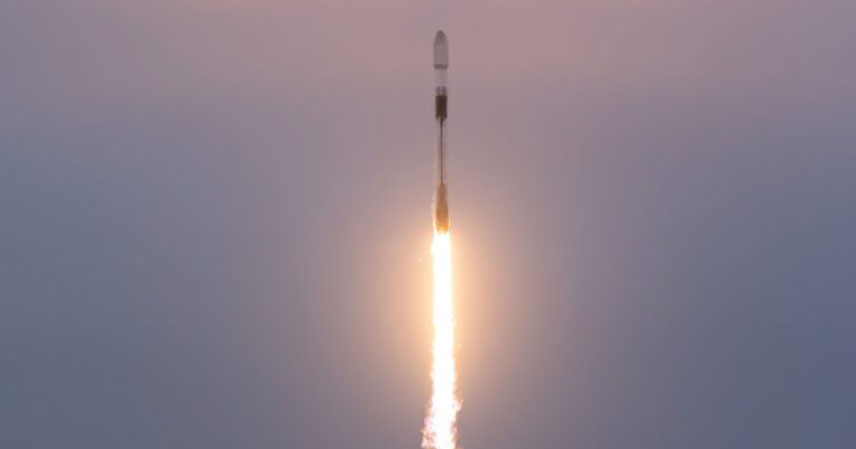The Pentagon’s ambitious plan to create a comprehensive missile defense system, known as the Golden Dome, took a significant leap forward this week. Twenty-one satellites, the first tranche of a planned 154-satellite constellation, successfully launched into orbit, marking a crucial step in bolstering America’s national security capabilities. This deployment represents a significant investment in advanced space-based technology and heralds a new era in missile tracking and defense.
The launch, carried out by SpaceX using a Falcon 9 rocket, underscores the growing reliance on space-based assets for national security. The success of this mission is a testament to the collaborative efforts between the Pentagon’s Space Development Agency (SDA) and the private aerospace sector, showcasing the potential of public-private partnerships in advancing defense technology.
What Happened? 📝
On Wednesday morning, a SpaceX Falcon 9 rocket lifted off from Vandenberg Space Force Base in California, carrying 21 satellites designed to form part of the SDA’s Tranche 1 constellation. The launch occurred at 7:12 am PDT, sending the satellites southward over the Pacific Ocean towards a polar orbit. This strategic orbital path allows for comprehensive global surveillance.
Following deployment, these satellites will independently boost themselves to a final operational altitude of approximately 600 miles (1,000 kilometers). Once in position, they will undergo several weeks of rigorous testing and activation procedures to ensure full operational capability.
The Golden Dome: A New Era in Missile Defense 🛡️
The Golden Dome is a revolutionary concept in missile defense, aiming to create a comprehensive, space-based network capable of detecting and tracking ballistic missiles from launch to impact. Unlike traditional ground-based systems, the Golden Dome’s space-based architecture offers significantly improved coverage and reaction times, potentially providing crucial early warning capabilities.
This advanced system relies on a vast network of interconnected satellites working in concert to provide real-time data on missile trajectories. This data is then relayed to ground stations, allowing for quicker and more informed decision-making in response to potential threats.
The Significance of Tranche 1 🚀
The successful launch of these 21 satellites marks a pivotal moment in the development of the Golden Dome. This first tranche, known as Tranche 1, serves as a crucial proof-of-concept, demonstrating the feasibility and effectiveness of the SDA’s technological approach. The data collected during the testing and activation phases of these satellites will be vital in informing the design and deployment of subsequent tranches.
The SDA plans to launch an additional 133 satellites over the next nine months to complete the Tranche 1 constellation. This ambitious timeline underscores the urgency and importance of establishing this critical defense capability as quickly as possible.
Technological Advancements and Challenges 🛰️
The satellites deployed are equipped with cutting-edge sensors and communication systems, enabling them to detect and track ballistic missiles with unprecedented accuracy. These technological advancements represent a significant leap forward in space-based surveillance and missile defense technologies.
However, the project also faces significant technological challenges. Maintaining and coordinating a constellation of this size in orbit requires sophisticated software and robust communication infrastructure. The Pentagon must also address potential vulnerabilities to cyberattacks and space-based threats.
Key Takeaways 🔑
- Twenty-one satellites, the first of 154, launched successfully, marking a major step in the Golden Dome missile defense project.
- The Golden Dome aims to create a comprehensive space-based missile tracking and defense network.
- Tranche 1 serves as a crucial proof-of-concept for the technology and will inform future development.
- The project highlights the increasing importance of space-based assets for national security.
- Technological challenges remain, including maintaining the constellation and securing it against threats.
The successful launch of Tranche 1 is a significant milestone, but it’s just the beginning of what has been described as a long-term, high-stakes race against time. The coming months will be crucial in assessing the performance of these satellites and paving the way for the completion of the Golden Dome. The future of missile defense is undoubtedly taking flight.
Source: Pentagon begins deploying new satellite network to link sensors with shooters



